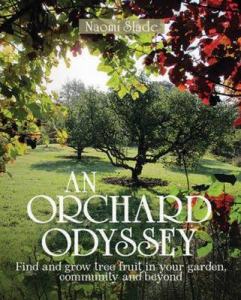 It is time to think of fruit. Gleaming apples and fat ripe plums; perfumed quinces and sugary pears. Great heavy boughs of it, weighed down by abundance: gnarled trunks and sweet scents, drunk wasps and bubbling jam.
It is time to think of fruit. Gleaming apples and fat ripe plums; perfumed quinces and sugary pears. Great heavy boughs of it, weighed down by abundance: gnarled trunks and sweet scents, drunk wasps and bubbling jam.
Of course all that’s in the future: at the moment, it’s more like dinner-plate boots caked with three inches of mud, the squelch of a spade and the stinging of fingertips as they gradually thaw out after planting yet another new tree.
But planting fruit in winter is among my very favourite jobs. Was there ever half an hour spent which offers as much promise? Years and years of fruit for a short burst of digging in the cold. It’s not much to ask.
I am currently waiting impatiently for the arrival of the three new apple trees I’m planting this year. They are bare root, all on MM106 rootstocks (the middle-sized one), three varieties. ‘Warner’s King’ is a cooker I’m planting in tribute to a fantastic tree in my mum’s old back garden, boughs weighed almost to the ground with fruit: we had it identified at the Barrington Court Apple Day a few years ago and I’ve wanted one of my own ever since. There’s ‘James Grieve’, which I grew when we lived in Surrey and loved as it produces both crisp, tasty eaters if you pick them early, and sweet cookers if you leave them on the tree. And finally ‘Egremont Russet’: just because I need a good storing eater and I love russets.
So with all this fruity activity going on it was timely that Naomi Slade’s latest book, An Orchard Odyssey, dropped through my letterbox. I have been absorbed ever since in its wide-ranging and eclectic mix of story-telling, people-watching and up-to-the-minute analysis of the state of our orchards today. And then in the second half of the book there’s a refreshingly modern take on setting up an orchard yourself: the 21st century kind of orchard more likely to be planted in pots than paddocks, and all the more inventive for it.
I have loved its gentle stories of how apples and pears emerged from the wild to become our best-loved fruits. Naomi has dug deep to find some truly enlightening gems, the kind of thing that sheds light on something you thought you already knew.
I greeted the appearance of Johnny Appleseed like a long-lost friend, only to find out that he hadn’t, as I’d thought, walked across America scattering seed as he went (I’d always thought it mildly unlikely that many would have germinated) but in fact set up mini-orchards which he then tended to to maturity before selling them on to settlers travelling West.
I never knew there are wild figs growing on the bank of the River Clyde, near Glasgow; or that the word ‘scrump’ comes from a 19th century dialect word meaning a withered apple. Hence ‘scrumpy’ cider, too.
I am a magpie for this kind of randomly interesting snippet. I learned that China produces nearly half the world’s output of 80 million tonnes of apples. And that you can find rhubarb growing ‘wild’ (actually, planted, but thriving) in hedgerows in Lincolnshire. Well. Who knew?
There is more: so much more. Ancient orchards and the wildlife who live there; foraging and the importance of wild fruit; nutrition, and the significance of names. How to weave fruit plants into the fabric of your garden; practical stuff about pollination groups and rootstocks; and down-to-earth instructions about looking after your trees.
And sprinkled in among them like so much blossom are pen portraits of the people whose devotion to fruit has gently shaken apples from trees and generally made a difference. Tom Burford, working to gather and protect America’s apple varieties; the dedicated fruitaholic Joan Morgan, whose epic Book of Pears has just won Reference Book of the Year at the Garden Media Guild Awards; Mark Diacono, pushing the boundaries of fruit-growing on his East Devon farm; and the wonderfully-named Barrie Juniper, who went all the way to the mountains of Uzbekistan to trace the origins of the domesticated apple.
I love books like this; the kind you can pick up to dip into on a lazy afternoon and always learn something new. It’s a little apple heavy – no surprise when you realise Naomi runs an artisan apple business and so really, really knows her apples; but perhaps I might have liked to find out more about other orchard fruit like plums, cherries, quinces and mulberries. They are mentioned here and there, but only really in passing.
But that’s to quibble about a book which is a delight from start to finish, underpinned by a deep understanding and love for the history, folklore and modern-day phenomenon which is the humble fruit tree. I will be dipping back in, again and again, for a long time to come.

It’s a fab book, but then I’m biased as I had the delightful task of proofreading it! Interesting to see the transformation of the Word documents I received into a thing of beauty as well as a good read 🙂
Isn’t it just! Lucky you to get to proofread it 😀 And yes, I’ve had much the same experience with my own book (out September in all good bookshops!!) – amazing when you see the words you’ve scribbled onto your computer laid out in a proper book…
Pingback: Blossom Time | CLICKY – GET YOUR CLICKS HERE